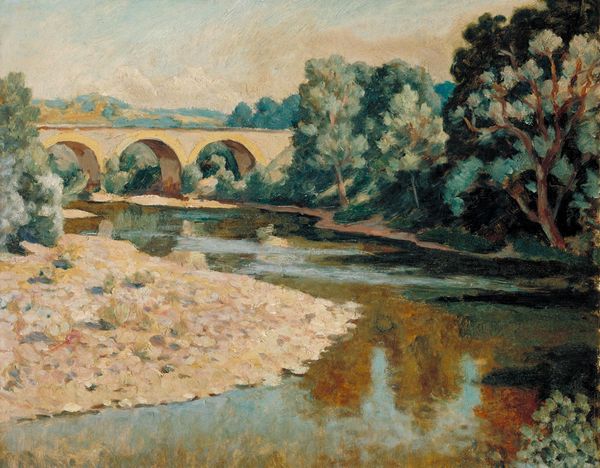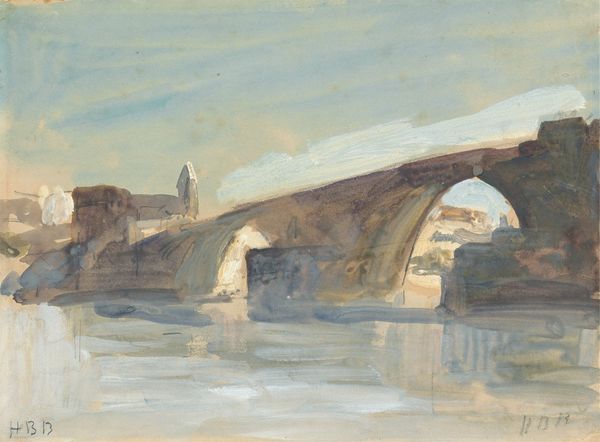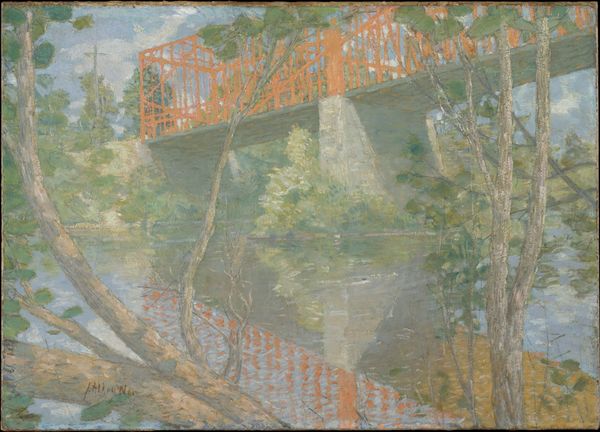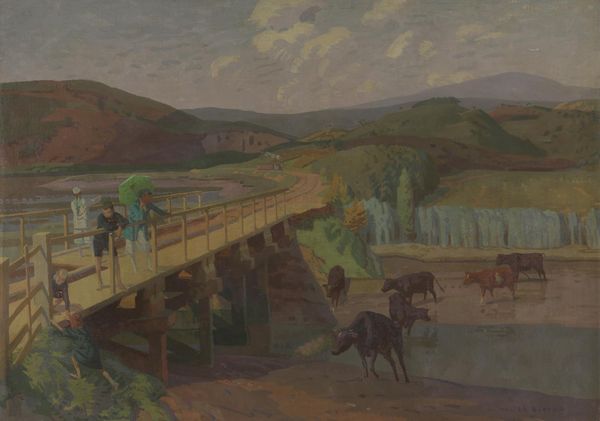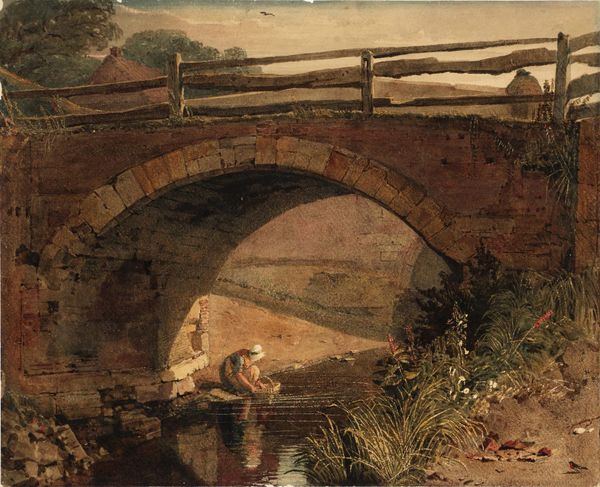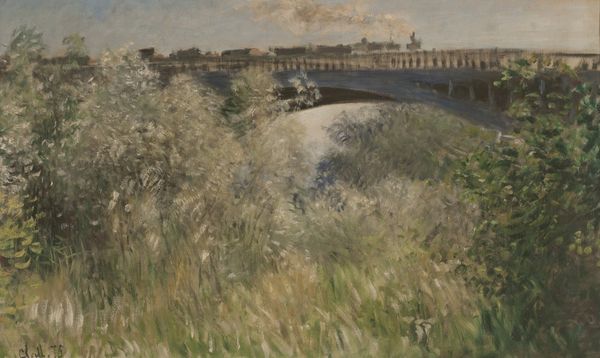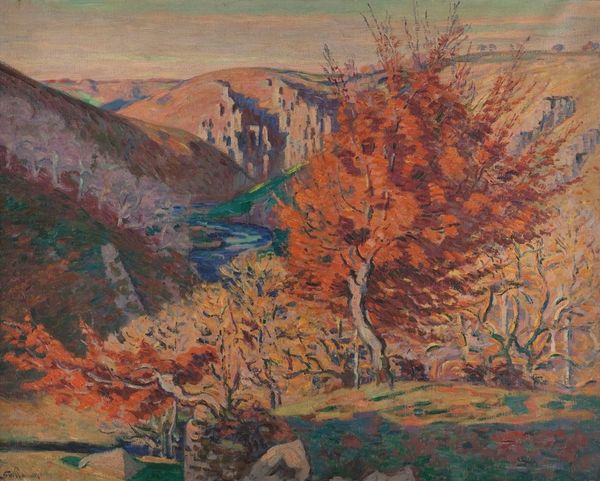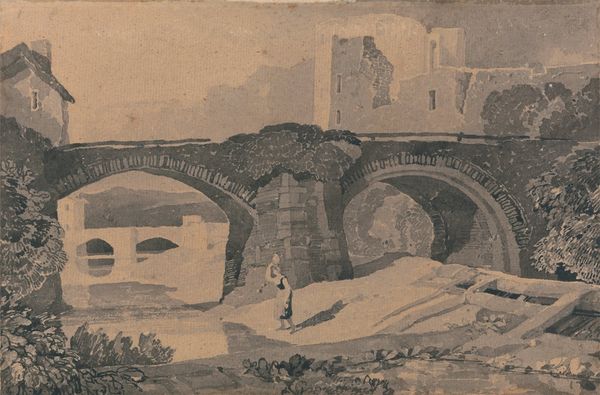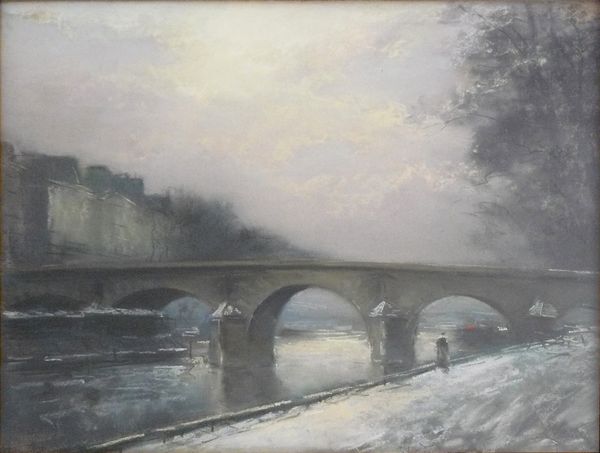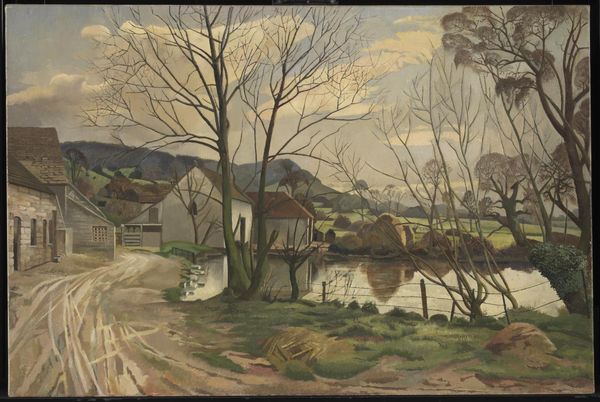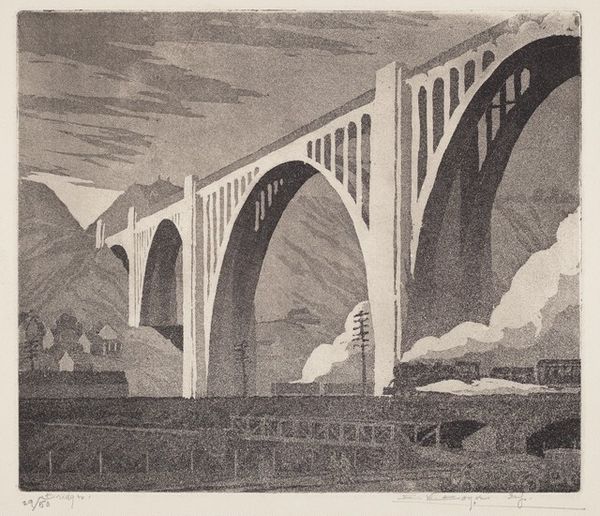
Dimensions: support: 651 x 810 x 21 mm
Copyright: © The estate of Sir Cedric Morris | CC-BY-NC-ND 4.0 DEED, Photo: Tate
Editor: This is Sir Cedric Morris's "Les Ponts de Ceret," currently at the Tate. I’m really struck by how the bridges seem to frame the landscape, almost like a commentary on human intervention in nature. What do you see in this piece? Curator: I see a dialogue, or perhaps a tension, between the constructed environment and the natural one. These bridges, symbols of connection and progress, are rendered in a muted palette that almost blends with the landscape. It’s as if Morris is asking us to consider the impact of infrastructure on our perception of nature. Editor: That's a great point! The muted colors do seem to soften the starkness of the architecture. Curator: Exactly. And consider that Morris, as an openly gay artist, might be subtly commenting on the societal structures, the bridges, that both connect and constrain us. What do you think? Editor: I hadn't thought of that, but it adds a whole new layer to the interpretation! I'll have to look at his work with that lens in the future. Curator: It’s often about understanding art in its broader social and personal contexts. This context informs the art’s cultural significance and meaning.
Comments
tate 7 months ago
⋮
http://www.tate.org.uk/art/artworks/morris-les-ponts-de-ceret-t07784
Join the conversation
Join millions of artists and users on Artera today and experience the ultimate creative platform.
tate 7 months ago
⋮
In 1920 Cedric Morris moved from Cornwall to Paris. There he and his partner, the painter Arthur Lett-Haines (1894-1978), became part of the artistic milieu in Montparnasse which included Marcel Duchamp (1887-1968), Man Ray (1890-1976) and the collector, Peggy Guggenheim (1898-1979). They used Paras a base, travelling extensively around the rest of the country and beyond. In May 1923 they moved to Céret near the Pyrénées in the south-west of France. In the early part of the century Céret had been visited by many artists including Braque (1882-1963), Picasso (1881-1973), Gris (1887-1927) and Chagall (1887-1985). Morris and Lett-Haines stayed here for several months, during which time Morris painted a portrait of the English artist, John Banting (1902-71), and a number of landscapes, including three views of the twin bridges. Despite his contact with the avant-garde, Morris based his landscape paintings on direct observation of nature. At this time he remarked that he liked to go to the French countryside and 'meander about slowly, watching things move, a ladybird on a leaf, someone rubbing lavender into a basket' (Morphet, p.28). Morris uses characteristically strong colours and bold forms in his landscapes. In addition he textures the surface with a thick impasto which animates the canvas. This is especially evident in the rough surface of the river and prickly vegetation in the foreground of the painting. Morris's preoccupation with forms and shapes anticipates the brief period in which he was to experiment with abstraction. In 1923, the same year as this painting, he was working on Experiment in Textures (Tate T06970). Although this work appears to be a radical departure from Les Ponts de Céret, Morphet suggests that it shares affinities with his landscape compositions. He remarks that in this abstract composition, 'there is a strong analogy with forms of nature, and a latent sense of natural forces' (Morphet, p.28). Further reading:Richard Morphet, Cedric Morris, exhibition catalogue, Tate Gallery, London 1984 Heather BirchallJanuary 2002
